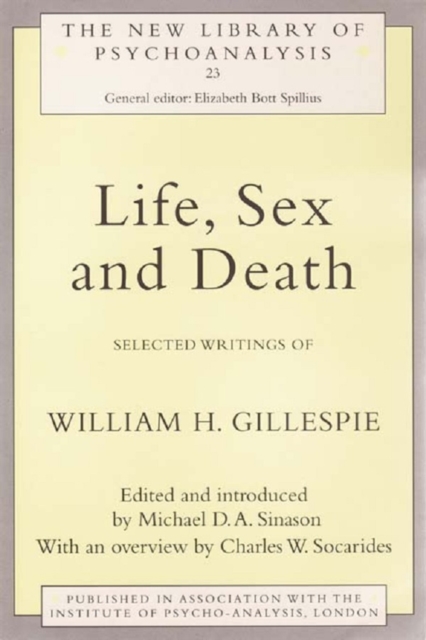
Life, Sex and Death : Selected Writings of William Gillespie PDF
Edited by Michael (British Psychoanalytical Society, UK) Sinason
Part of the The New Library of Psychoanalysis series
Description
A distinguished and revered elder of the British Psycho-Analytical Society, Dr William Gillespie is one of the few British psychoanalysts who began training in the Vienna of the early 1930s.
Later he became well known in England for his pioneering studies of sexual perversion, and for his views on female sexuality, regression in old people facing death, and on instinct theory. William Gillespie is celebrated not only for his scientific contributions but also for his administrative skill, integrity and tact in managing the International Psycho-Analytical Association and the British Psycho-Analytical Society, where he was trusted and respected by both Melanie Klein and Anna Freud. In a biographical introduction the editor, Dr Michael Sinason, looks back on the productive 90 years of Gillespie's life, writing movingly of his early life in China and Scotland and showing his development as a psychoanalytic thinker, organizer and administrator, husband and father.
Dr Charles Socarides, an American psychoanalyst eminent in the field of perversion and its treatment, discusses the innovations introduced by each of the papers in the collection shows how Gillespie's ideas influenced by his own contributions and affected the field as a whole.
Information
-
Download - Immediately Available
- Format:PDF
- Pages:224 pages
- Publisher:Taylor & Francis Ltd
- Publication Date:25/07/2005
- Category:
- ISBN:9781134796717
Information
-
Download - Immediately Available
- Format:PDF
- Pages:224 pages
- Publisher:Taylor & Francis Ltd
- Publication Date:25/07/2005
- Category:
- ISBN:9781134796717










